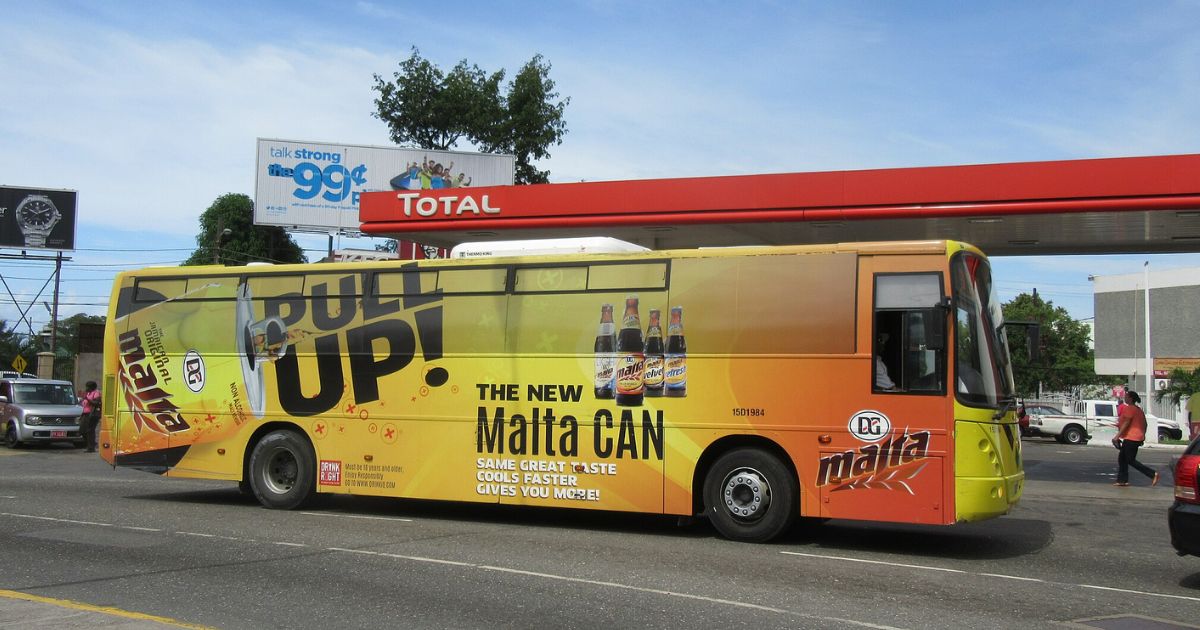
In a time of declining revenue, adding a new revenue stream by featuring advertising wraps on your buses seems like a no-brainer. But is it really the best option for your agency?
This past August, Albuquerque New Mexico’s City Council voted to phase out advertising bus wraps from their city’s fleets, citing safety and recognizability issues with wrapped buses. “[The buses] should be clearly marked,” stated City Councilor Isaac Benton, who introduced the bill. “As a supporter of public transit, I think we need an identifiable system. I don’t think we need a random assortment of advertising billboards riding around our city.”
There are very good reasons to wrap company vehicles, but when it comes to public transit, maybe it’s not a great idea. But first off, the pros: wrapping is a great opportunity to brand your transit agency. If, for example, you are starting a new service, it can be the ideal way to get the word out right in the area where that service operates.
Right now, Grand River Transit of Waterloo (Canada) is considering adding wraps to more of their bus fleet, and as Director of Transportation Doug Spooner noted succinctly, “The cost of running transit is always increasing, and we’re looking for ways to offset those increased costs, like service expansion and fuel.”
For the third parties who want to use your bus as a billboard, wraps offer an ideal advertising medium. They provide high visibility, with a wide audience reach, and can target the specific locations where prospects live and travel. Unlike digital ads that pop up to annoy us when scrolling the web, wraps are relatively non-intrusive. Buses often move slowly in traffic, and make frequent stops, offering advertisers a long dwell time.
Some Crucial Drawbacks to Bus Wraps
Unfortunately, the drawbacks of most bus advertising outweigh these benefits. For one, it’s an extremely poor customer experience for riders. In a wrapped bus, riders have less visibility to the outside world. Some riders have even reported becoming nauseous from riding in buses, because the wrap’s graphics make it difficult to see outside. And of course, many riders value the view from the bus. Jarrett Walker’s Human Transit blog has a depressing example of what a common tourist route in Berlin looks like through the windows of a wrapped bus.
At night or in rainy weather, wrapped windows are no longer fully transparent, making it hard for many riders to recognize when to get off (especially if voice announcements are not working), or even to tell whether it is safe to deboard. If the bus is stopped for some reason, riders want to be able to see what is happening outside.
A related safety issue is that, because the bus interior is darker, it might encourage criminal activity on board – not a minor issue given recent spikes in on-board drug use. Riders also want to be able to see inside before they board. There’s also a safety-related reason that wraps are forbidden in Norway. Authorities there believe the wraps may prevent emergency escape from the vehicle by making windows harder to break.
If you actually want ridership numbers to improve, and your existing riders to not hate you and their rides, stop pandering to your advertisers and start pandering to your community.
– Reddit user Brigodon, on the Milwaukee County Transit System
Finally, while there are exceptional examples of bus wraps that are attractive, many may be a bad brand for your city, for example featuring criminal lawyer or bail bond ads instead of highlighting the city your agency serves. Better alternatives may be enclosed bus stop signage or in-bus advertising. These can bring in revenue, but not at the expense of your brand or your riders’ experience. Reddit user Brigodon explains best: “Full-wrap ads may not contradict your mission and values, but they certainly compromise your own vision.”
Photo credit: Jamaica Urban Transit Company (JUTC) Volvo B7R By Jason Lawrence from New York, via Wikimedia Commons Used under Creative Commons Attribution-ShareAlike 2.0 Generic (CC BY-SA 2.0)